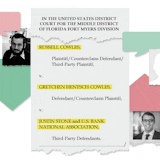Another St. Patrick's Day has come and gone. I used to look forward to the holiday for the excuse it gave me to bring home a magically delicious box of Lucky Charms. I'm not alone in having eaten the iconic General Mills brand as a grown-up. According to the Golden Valley-based manufacturer, nearly half of Lucky Charms consumers are adults. Not bad for a food invented by a man who chopped up Cheerios and Circus Peanuts candy, then doused it all in milk.
It's a cruel cereal. We've all felt the devastation when the marshmallows are gone and the bowl contains only oats and rainbow-colored 2 percent. Yet General Mills moves millions of boxes of Lucky Charms each year. Its sales — over $250 million in 2013 — are still rising in a cereal market that's slumping.
Add in the hundreds of millions General Mills earns each year from Cinnamon Toast Crunch, Honey Nut Cheerios and their pre-sweetened label mates, and the local food giant is likely taking in more than a billion dollars a year from products pitting toddler against parent in cereal-aisle meltdowns. On some grocery floor somewhere, a child is scissor-kicking his vote for a Big G brand as we speak.
All of this robust economic activity comes with a cavity — oops, I meant caveat — a coming economic, public-health and public-relations catastrophe with our fingerprints all over it. Thanks to our four-pronged relationship with sugar — via agriculture, commodity sales, food production and industry-sponsored food science — Minnesota has done as much as, if not more than, any other state to foster the global diabetes epidemic.
Our exposure to approaching policy changes, taxes and cultural stigma attached to sugar production will be high. We need to plan for the post-sugar economy, and we need to start now. The Mayo Clinic has yet to remove its candy, soda and juice machines. We need to talk about Lucky Charms.
Lucky Charms is 37 percent sugar. Its original recipe — Cheerios plus candy — failed to take off until the company coated the oat pieces in more sugar. The General Mills pre-sweetened line may be modest in comparison to the high-purity product coming out of the Kellogg's and Quaker Oats cartels, but much of it contains at least 9 to 10 grams of the white stuff per three-quarter-cup "serving." And that's after the company cut the crack in its cartoony brands in 2007 in order to continue advertising to kids.
But halting your loading dose of any cereal at three quarters of a cup is wishful thinking. The FDA says we eat 30 percent more per sitting than that. The agency is being modest. Except for those nibbling breakfast from the food well of a Graco stroller, most of us serve up the Breakfast of Champions at double the listed amount. When it's the Breakfast of Leprechauns, others of us are like lab rats sipping sucrose from a dropper — we are going back for the reload. That makes an enthusiastic morning with this proud Minnesota product a 5-to-10-teaspoon bolus of the source of all illness.
That's what they're calling sugar these days. In case you haven't heard, sugar is on the way out, and its stock is diving just as many other forbidden foods are being rehabilitated: The ban on dietary cholesterol has been lifted. (Eat those eggs.) The case against saturated fat is crumbling. (Eat that butter, bacon and coconut oil.) "Calories in, calories out" is being depicted as Big Food misdirection. (Rent the documentary "Fed Up.")



